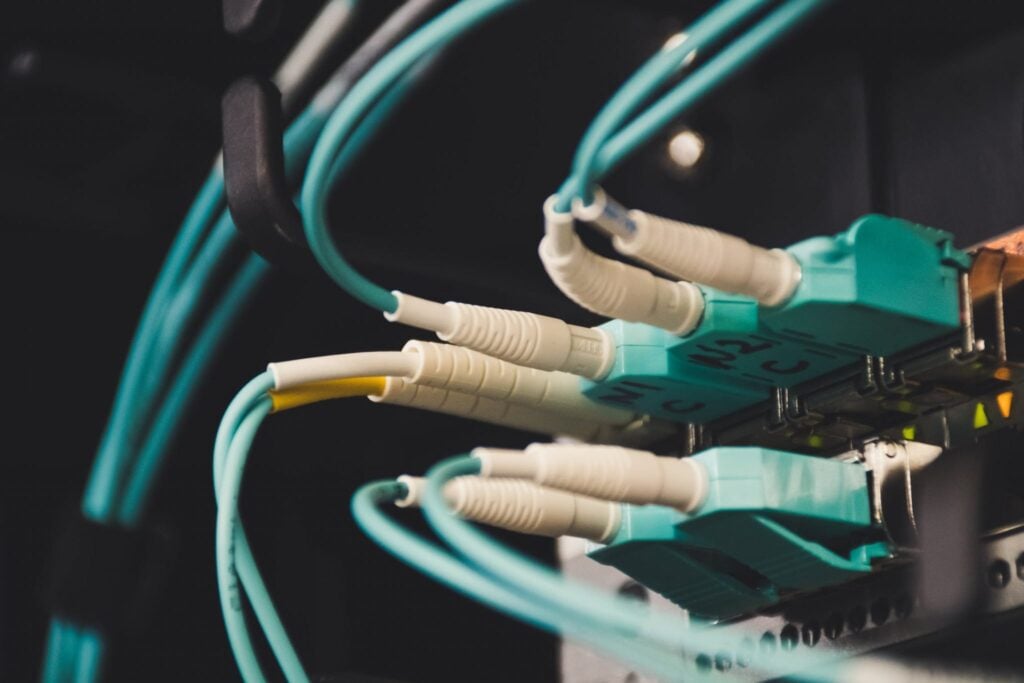Imagine it’s 2 AM, and you’re troubleshooting a network outage caused by a single, mistyped static IP address. Minutes become hours, downtime mounts, and your team scrambles to pinpoint the source of the error. This scenario isn’t hypothetical—it’s a common reality for IT teams still relying on manual static IP management.
Static IP addresses have traditionally been the go-to for server reliability. They seem straightforward and safe—until your network scales or configuration mistakes slip in. But there’s a better, more efficient way: DHCP reservations. DHCP is no longer just for client devices. When properly configured, DHCP reservations provide the same reliability as static IP addresses, with significantly less risk and administrative overhead.
By adopting DHCP reservations, you can centralize network management, minimize costly human errors, and boost operational resilience. Your team will spend less time managing IP spreadsheets and more time enhancing your infrastructure’s performance.
In this article, you’ll discover why DHCP reservations are superior to static IP addresses for server environments, along with actionable insights on best practices to modernize and streamline your network management.
What’s the Difference Between Static IPs and DHCP?
At the core of network management are two primary methods for assigning IP addresses to devices: static IP addresses and Dynamic Host Configuration Protocol (DHCP).
A static IP address is manually assigned to a device and remains constant. It’s often used for critical infrastructure—like servers, routers, or firewalls—because it ensures predictability. Each device has its address individually configured by an administrator, typically tracked in spreadsheets or network documentation.
In contrast, DHCP automatically assigns IP addresses from a predefined pool each time a device connects to the network. This approach significantly reduces manual configuration and administrative overhead. DHCP can dynamically provide additional critical configuration details, such as subnet masks, default gateways, DNS server addresses, and even specialized options for specific devices.
But DHCP isn’t just about dynamic assignment—it also supports DHCP reservations. A DHCP reservation assigns a specific IP address consistently to the same device, based on its MAC address. This means the device always receives the same IP, combining the predictability of static addressing with the convenience and manageability of DHCP.
Understanding the difference between traditional static IP assignment and DHCP (with reservations) sets the foundation for choosing the best method for your servers and infrastructure, ultimately enabling a more efficient and resilient network.
Traditional Reasons for Using Static IPs on Servers
Static IP addresses have long been the default choice for servers, and for good reasons. Stability is typically the most cited advantage: when a server maintains the same IP address indefinitely, administrators can confidently configure firewalls, DNS entries, and monitoring systems without worrying about unexpected changes.
Another perceived advantage of static IPs is their simplicity. For smaller networks, manually assigning addresses to each server initially feels straightforward, predictable, and safe. Many IT teams maintain detailed documentation and spreadsheets listing server IPs, creating a sense of control.
Legacy software and older systems also reinforce the preference for static addressing. Some applications, especially older or custom-built software, assume or explicitly require a static IP for proper operation. This requirement fosters a deeply ingrained tradition within IT teams, causing them to default to static IP addresses even when modern alternatives might serve them better.
However, this seemingly simple approach quickly becomes challenging as networks grow larger, evolve dynamically, or expand into cloud and hybrid environments. Static IP management becomes cumbersome, error-prone, and less scalable—a challenge we’ll explore in the following sections.
Why DHCP with Reservations Is a Better Modern Practice
While static IP addressing may feel familiar and comfortable, modern networks are increasingly complex, requiring greater flexibility, efficiency, and reliability. DHCP with reservations provides an ideal balance, retaining the predictability of static IP addresses while reducing manual administrative tasks and human error.
The key benefits of using DHCP reservations include:
- Centralized Management: DHCP servers act as the central authority, maintaining a definitive list of IP assignments. Instead of manually editing numerous devices, changes are made once on the DHCP server and automatically propagated.
- Reduced Human Error: Manually updating static IP configurations often leads to mistakes, such as duplicate addresses, typos, and inconsistent records. DHCP reservations significantly decrease the risk of such errors.
- Simplified Scalability: DHCP allows your infrastructure to scale easily. Adding, removing, or relocating devices no longer demands manual IP tracking and adjustments.
- Enhanced Integration and Automation: DHCP seamlessly integrates with DNS servers, inventory management systems, and network monitoring tools, facilitating greater automation in network operations.
- Configuration Consistency: DHCP reservations ensure configuration uniformity, essential for compliance and operational efficiency. Configuration drift—where server settings become gradually inconsistent—is greatly minimized.
Here’s a quick summary comparing static IP addressing and DHCP with reservations:
| Feature | Static IP Addresses | DHCP with Reservations |
|---|---|---|
| Predictable IP assignment | Yes | Yes |
| Centralized IP management | No (manual tracking required) | Yes (managed centrally) |
| Risk of human error | High (manual configuration) | Low (automated assignment) |
| Scalability | Poor (manual adjustments at scale) | Excellent (dynamic and centralized) |
| Integration & Automation | Limited | Extensive |
| Management overhead | High | Low |
DHCP reservations modernize network management by combining reliability with operational efficiency. Adopting this approach can save considerable resources, reduce downtime, and simplify troubleshooting, making your entire IT operation smoother and more resilient.
Addressing Concerns About DHCP
Despite the clear benefits of DHCP reservations, some IT teams remain hesitant to adopt DHCP broadly, particularly for servers. Let’s address the most common concerns directly.
Myth: “DHCP introduces the risk of IP addresses changing unexpectedly.”
With regular DHCP leases, IP addresses can indeed change. However, DHCP reservations eliminate this risk entirely. When a reservation is set, the IP address remains consistent every time the device requests it, just like a static assignment.
Myth: “A DHCP server creates a single point of failure.”
While it’s true that relying on a single DHCP server could pose risks, modern networks easily mitigate this by deploying high-availability DHCP solutions. Technologies such as DHCP failover or clustered DHCP servers ensure continuous, reliable service.
Myth: “Static IP addresses are simpler and easier to manage.”
This statement holds true only in very small environments. As your network expands, static IP management quickly becomes overwhelming and error-prone. Centralized DHCP reservations, on the other hand, significantly simplify IP tracking and assignment.
Below is a quick comparison that clarifies these common concerns:
| Common Concern | Static IP Reality | DHCP Reservation Reality |
|---|---|---|
| Unexpected IP Changes | Never happens, predictable | Never happens when reserved |
| Single Point of Failure | Not applicable | Mitigated with high availability |
| Ease of Management | Simple initially, difficult at scale | Simple and scales easily |
By clearly addressing these concerns, you can confidently embrace DHCP reservations to create a network that’s both reliable and easier to manage, even as your environment grows and evolves.
When Static IPs Still Make Sense
While DHCP reservations generally offer significant advantages, there are still specific cases where static IP addressing remains the best practice. Recognizing these exceptions ensures that your infrastructure remains robust and optimally configured:
Out-of-Band Management Interfaces
Devices used for emergency or out-of-band management, such as iDRAC, iLO, or management consoles, typically benefit from static IP addresses. In crisis situations, these static addresses provide consistent, guaranteed access even if DHCP services become unavailable.
Emergency Access Scenarios
In critical recovery or troubleshooting situations, static IPs provide certainty by removing dependency on potentially unreachable network services. During hardware failures or widespread network outages, this ensures essential devices remain reliably accessible.
Essential Network Infrastructure Services
Core infrastructure services—especially DHCP servers themselves, DNS servers, and default gateway routers—should generally use static IP assignments. Assigning static addresses to these devices avoids circular dependencies (such as a DHCP server needing an address from itself) and ensures fundamental services remain stable and available.
Cloud and Virtualization Platforms
Certain virtualization and cloud management platforms, such as OpenStack, explicitly require or strongly recommend static IP configurations for management nodes or control-plane servers. Using static IPs in these setups ensures consistent operations, simplifies maintenance, and avoids unexpected outages due to dynamic addressing.
Temporary or Isolated Environments
For short-term labs, testing environments, or isolated setups where deploying DHCP infrastructure isn’t practical, static IPs provide straightforward connectivity without extra administrative overhead.
Here’s an updated summary table:
| Scenario or Device Type | Reason for Static IP Preference |
|---|---|
| Out-of-Band Management | Reliable remote access independent of DHCP |
| Emergency Troubleshooting | Ensures device availability during network outages |
| DHCP and DNS Servers | Prevents circular dependency, ensuring service stability |
| Cloud Platforms (e.g., OpenStack) | Required by architecture for control-plane stability |
| Temporary or Isolated Networks | Practical and straightforward when DHCP deployment isn’t justified |
Understanding when static IPs still make sense enables you to adopt DHCP reservations strategically, creating a network environment that’s both modern and resilient.
Best Practices for DHCP in Server Environments
To effectively deploy DHCP reservations for your servers, follow these proven best practices. Adhering to these guidelines ensures reliability, security, and ease of management across your network infrastructure:
Use DHCP Reservations, Not Pure Dynamic Leases
Always use DHCP reservations for critical servers rather than allowing fully dynamic assignment. This ensures servers consistently receive the same IP address, delivering predictability equivalent to static IP addressing.
Ensure High Availability for DHCP Servers
Deploy your DHCP servers with high availability solutions, such as DHCP failover pairs or clustering technologies. High-availability configurations prevent DHCP server failures from impacting network operations.
Integrate DHCP with DNS and Inventory Systems
Integrating DHCP and DNS ensures consistent forward and reverse lookups. When you tie DHCP into inventory or asset management tools, it streamlines documentation, audits, and troubleshooting.
Clearly Document DHCP Reservations
Maintain clear documentation of your DHCP reservations, including details such as MAC addresses, reserved IPs, server hostnames, and usage purposes. Well-maintained documentation facilitates network audits and streamlines troubleshooting.
Implement Security Best Practices
Protect your DHCP infrastructure by limiting access, applying role-based access controls, and implementing monitoring for unauthorized changes. Ensure your DHCP servers have updated security patches to protect against vulnerabilities.
The table below summarizes these best practices and their benefits:
| Best Practice | Benefits |
|---|---|
| DHCP Reservations vs. Dynamic | Predictable addressing reduces troubleshooting time |
| DHCP High Availability | Eliminates single points of failure, ensures continuity |
| Integration with DNS & Inventory | Simplifies management, improves visibility |
| Detailed Documentation | Facilitates audits, troubleshooting, and management |
| Security & Access Controls | Protects critical network services from unauthorized access |
By consistently applying these best practices, your organization can confidently leverage DHCP reservations to simplify network management, enhance reliability, and strengthen security across all server environments.
Conclusion
The days of relying exclusively on static IP addresses for your server infrastructure are evolving. While static IPs have traditionally offered simplicity and stability, modern networking practices and increasing complexity highlight the value of DHCP reservations as a superior approach for many scenarios.
By embracing DHCP reservations, you gain centralized control over IP assignments, drastically reduce the potential for human error, and simplify the process of scaling your infrastructure. You’ll spend less time troubleshooting IP conflicts and managing outdated documentation and more time focusing on proactive network optimization and innovation.
However, static IPs retain their place in specific cases—particularly for emergency access scenarios, out-of-band management, essential services such as DHCP and DNS servers, and specific cloud platforms like OpenStack. Clearly defining these exceptions allows you to use static IPs strategically while adopting DHCP broadly.
Ultimately, reconsidering your traditional approach to IP addressing will yield increased efficiency, reliability, and operational excellence. Evaluate your network’s current practices, identify opportunities for improvement, and start leveraging DHCP reservations as part of your modernization strategy today.

